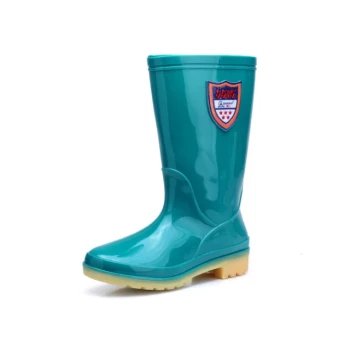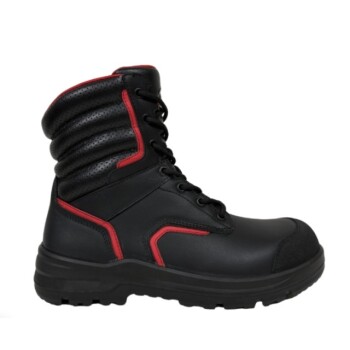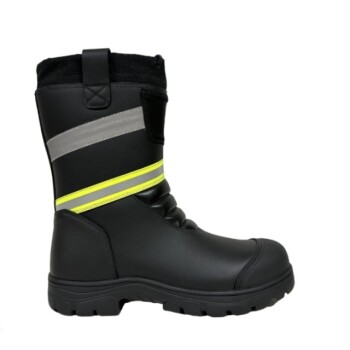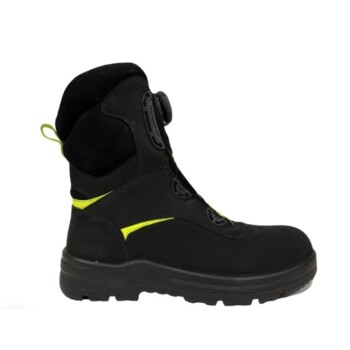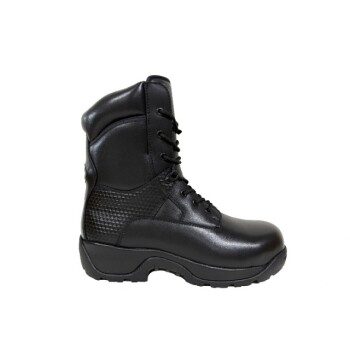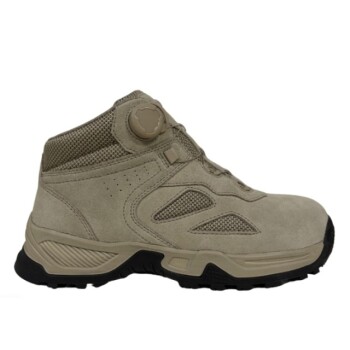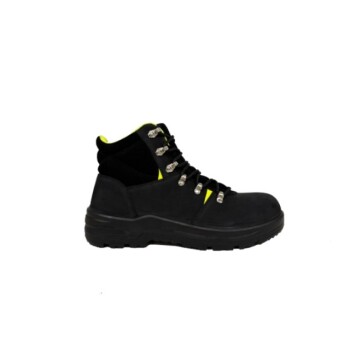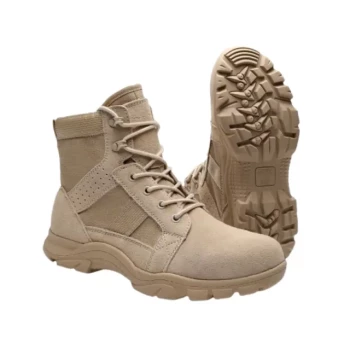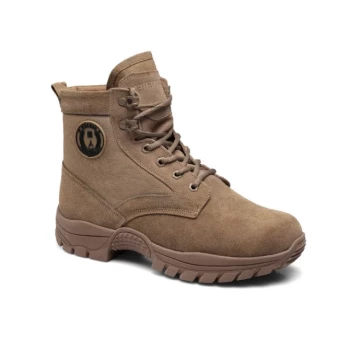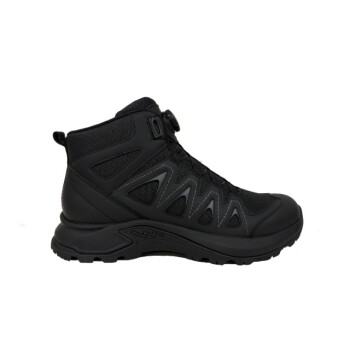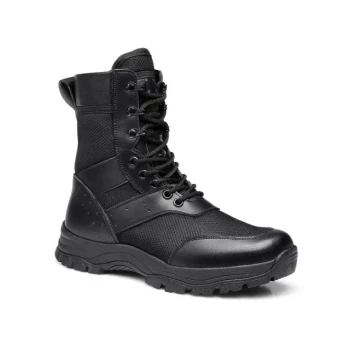In short, these boots are specifically designed to perform well in wet conditions. Their construction focuses on keeping your feet dry through the use of waterproof materials and specialized membranes, ensuring comfort and protection when you need it most.
The key to their performance lies in understanding the distinction between water-resistant for light moisture and waterproof for heavy exposure. Even the best waterproof boots have limitations, such as water entering from the top, which can be managed with the right gear.
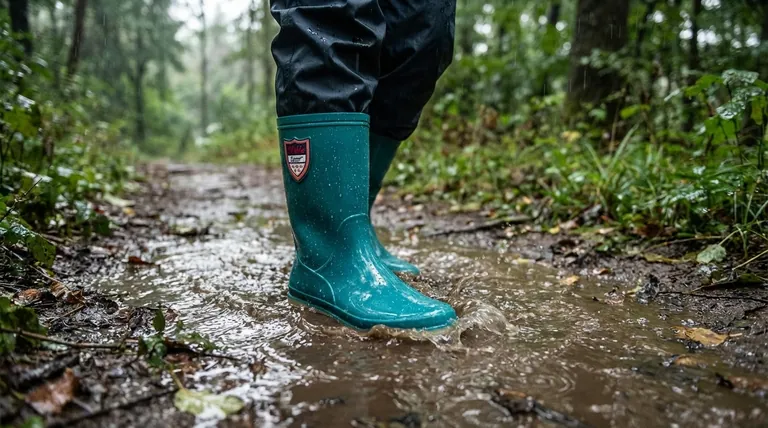
How Boots Achieve Water Protection
To understand how these boots perform, we need to look at the specific technologies used to manage moisture from both the outside and the inside.
The First Line of Defense: Water-Resistant Materials
Many boots use water-resistant leather or other treated fabrics as the primary barrier against the elements.
This is effective for keeping your feet dry in light rain or from incidental splashes. It provides a good balance of protection and breathability for varied conditions.
The Core Technology: Waterproof Membranes
For truly wet environments, high-performance boots rely on an internal waterproof membrane.
This is a specialized layer that prevents liquid water from entering the boot from the outside. Crucially, it is also breathable, allowing sweat and moisture vapor from your foot to escape. This dual function is what keeps your feet truly dry and comfortable.
Why Breathability is Non-Negotiable
A boot that only blocks water from coming in would quickly become a swamp from your own sweat.
Effective boots for wet conditions must be breathable. They are designed to allow warm, moist air to be pushed out, regulating temperature and preventing the clammy feeling that leads to blisters and discomfort.
Common Pitfalls and How to Avoid Them
Even the most technologically advanced boots can fail if used improperly. Understanding their limitations is essential for staying dry.
The Most Common Failure Point: Ingress From the Top
The most frequent way "waterproof" boots fail is when water runs down your leg and enters from the boot's cuff.
This can be easily prevented by wearing waterproof pants or bibs over the top of your boots. For more active use, ankle gaiters create a reliable seal that closes this gap.
The Importance of Proper Drying
After exposure to heavy moisture, proper care is critical to maintaining the boot's integrity.
Never use direct heat, like a radiator or campfire, to dry your boots, as this can damage the materials and adhesives. Soak up excess water with a towel and allow them to air dry naturally.
Making the Right Choice for Your Needs
Your specific environment dictates the level of protection you need.
- If your primary focus is daily wear with occasional rain: Boots with water-resistant materials offer a great balance of protection and comfort.
- If your primary focus is hiking or working in consistently wet conditions: A boot with a dedicated waterproof membrane is non-negotiable.
- If your primary focus is wet and extremely cold weather: Look for a waterproof boot that also features significant insulation or a separate inner liner.
Ultimately, selecting the right boot is about matching its specific water-protection features to the conditions you will face.
Summary Table:
| Feature | Function | Key Benefit |
|---|---|---|
| Water-Resistant Materials | Repels light rain/splashes | Good balance of protection & breathability |
| Waterproof Membrane | Blocks external water, allows sweat to escape | Keeps feet dry in heavy exposure |
| Breathable Design | Releases moisture vapor | Prevents clamminess and blisters |
| Proper Drying Care | Air drying without direct heat | Maintains boot integrity and longevity |
Need Reliable Wet Weather Boots for Your Business?
As a large-scale manufacturer, 3515 produces a comprehensive range of waterproof and water-resistant footwear for distributors, brand owners, and bulk clients. Our production capabilities encompass all types of durable, high-performance boots designed to excel in wet conditions.
We help you:
- Source reliable waterproof footwear with advanced membrane technology
- Customize designs for your specific market needs and environmental conditions
- Access bulk manufacturing with consistent quality control
- Expand your product line with technically advanced outdoor and work footwear
Contact us today to discuss your waterproof boot requirements: Get in Touch
Visual Guide
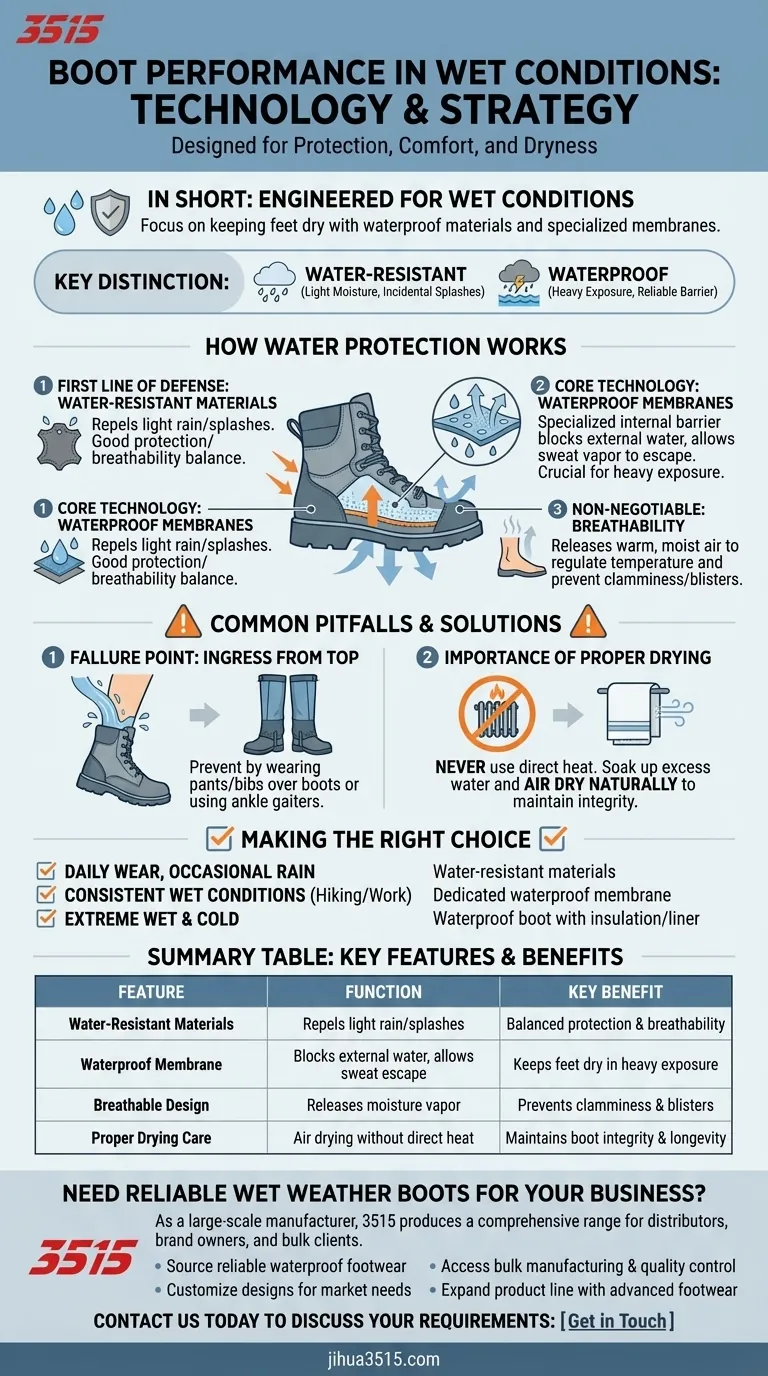
Related Products
- Factory Direct Wholesale Rain Boots Durable Waterproof & Fully Customizable
- Premium Wholesale Waterproof Safety Boots High Performance Protection for Industrial Markets
- Wholesale Safety Footwear Manufacturer for Bulk & Custom OEM Orders
- High Performance Fire-Retardant Waterproof Safety Boots
- Customizable Anti-Smash Safety Boots for Wholesale & Private Label Manufacturing
People Also Ask
- What are the main materials used in the production of rain boots? A Guide to Durability & Comfort
- What are the limitations of rain boots in certain climates? Find the Right Footwear for Your Weather
- What are the drawbacks of rubber boots regarding breathability and comfort? Understanding the Moisture Trap
- What are the liner materials for rain boots? Cotton vs. Blends for Comfort & Durability
- What factors should be considered when choosing rain boots? Find the Perfect Boot for Your Needs
